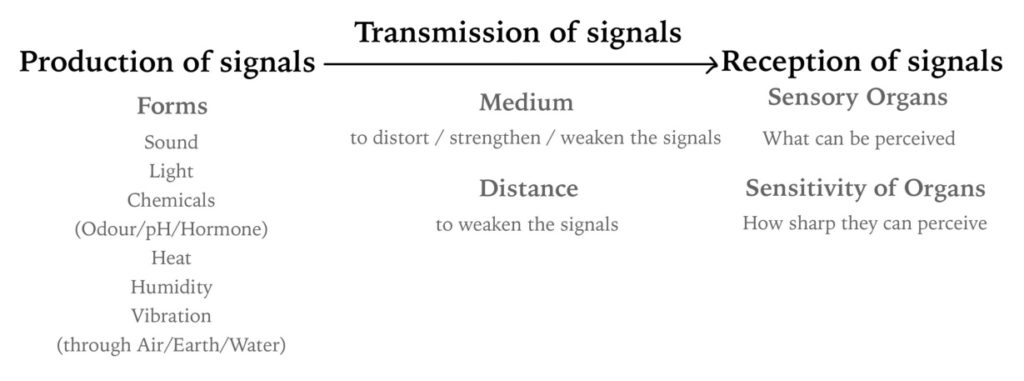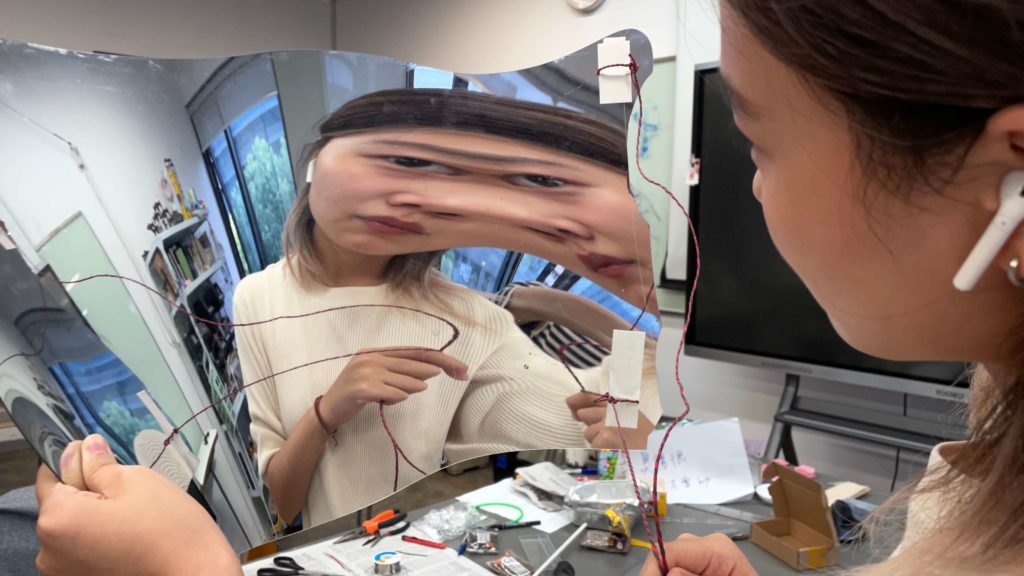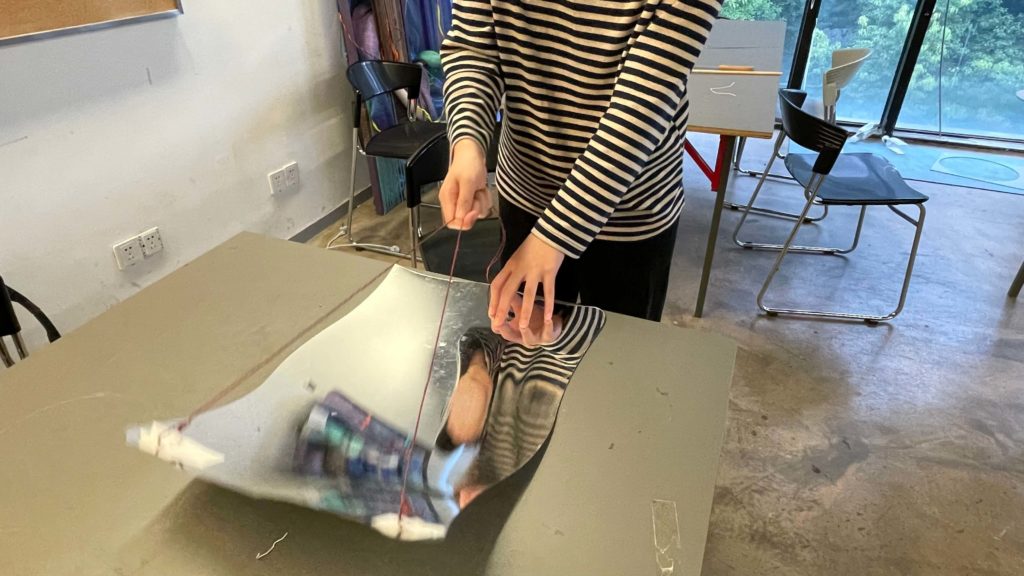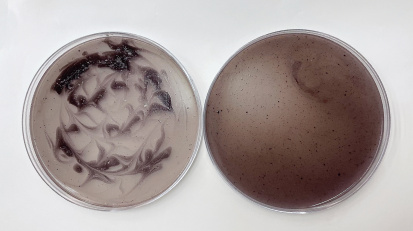TU Keming 屠柯鸣 WANG Zichun 王子淳 GUO Siyu 郭思宇
What we learned in the 2 days project is that we are constantly living in a net of perception consisting of many pathways of perception. At the level of the network, the boundary between the observer and the target of observation is blurred. Most of the time one identifies as both. At the level of the pathway, the boundary of existence is no more the skin of a person, the bark of tree or the scale of a fish.


Our existence reaches as far as our smell travels and goes deep into our body where microorganisms or parasites are affected by chemical changes in our body. And the scale of our existence is different in the perception of different observers, depending on the sensitivity of their sensory organs.




But we have neither the ambition nor the ability to squeeze all this concept in our two-days project. So we just start from the very basic point that there are more ways to perceive than we human know. And that is why we make this tool kit to catch different forms of perceivable signals and visualise them to the audience.
The kit includes:
1) a heat sensor: We mixed some thermo-sensitive pigment into bio-plastic so that it changes colour once being touched.

2) two vibration sensors: One (fig.4) is to sense the vibration of the ground. The vibration of the earth goes through the dish into the water and disturbs the water surface. And the light reflects on the water surface casting the vibration on the wall.

The other catches the turbulence of the air. Once someone walk past it, the many reflective panes will sway and the light they cast on the wall will change indicating the vibration in the air.

3) two gadgets to change the field of vision: One is inspired by the compound eyes of the insects. The other distort the field of vision when deformed.




4) a pressure sensor: The liquid in the tube redistributes every time one presses the bag.


To give the gadgets a sense of consistency and more interesting to interact with, we want to further on integrate them into one fictional creature named It (fig.9).

The head part (fig.9.1) of It is made of the same material in the third gadegt. It will be driven by a motor and keep rotating like it is scanning the surroundings. The neck part (fig.9.2) is of the same structure as the air vibration sensor. There are two kinds of blades around the stem part. One (fig.9.3) is made of the pressure sensor and the other (fig.9.4) the heat sensor. The extended part (fig.9.5) are the triggers of the pressure sensor blades.